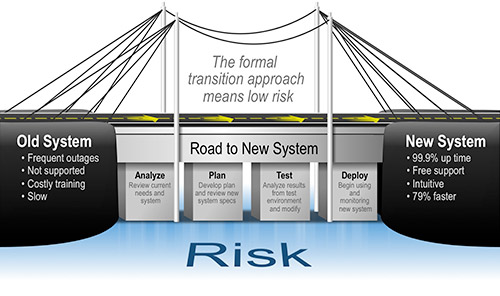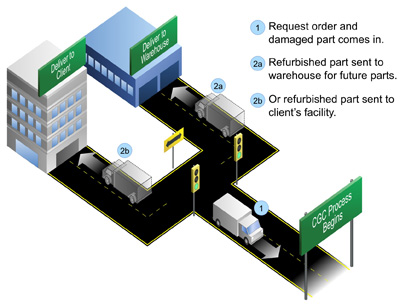Diversity, Equity, and Inclusion (DEI) are becoming increasingly important in today's business world. As the…
Yaaaawn. Even the best oral proposal can bore your audience. Why? Because our brains process information fast … very fast. Your audience quickly tunes out once they decide the material being presented is unimportant or uninteresting; therefore, it is unnecessary for them to pay close attention. Engage your audience, and they will stay focused—and will remember you and your proposal. The following are five techniques to capture and hold your audience’s attention throughout your oral proposals.
1. Cognitive Dissonance.
Keep your audience guessing by feeding bits of information as opposed to revealing your point early. For example, build a graphic slide by slide as if assembling a puzzle. Slowly reveal parts of your graphic, briefly speak to each part and then assemble your graphic, so the key point is revealed in the end (see the following example).

Alternatively, start with the end result and slowly reveal how the audience can achieve the end result (as shown in the next example).

2. Surprise.
Say, show or do something that is unexpected or shocking. It can be as simple as a loud noise (a clap or a few notes of music) or an odd picture added to your slide deck. The purpose is to reengage the audience’s brain. Being unpredictable or incongruent snaps the mind to attention. For example, stop talking and invite your audience to watch a simple animation with (brief) descriptive text.
3. Story.
Tell an interesting story that complements your proposal. Remember the saying, “Facts tell and stories sell.” Stories hook audiences from the start. Share a unique story to hold their attention but be sure the story ties into your proposal. Use metaphors, similes and analogies to communicate complex concepts. For example, tell a story about “bridging the gap” between your old and new software solutions (transition) with the aid of a bridge graphic.

4. Involve.
Ask your audience to participate. Pose a question, solve a puzzle, play a game, or perform an exercise. For example, avoid telling evaluators and decision makers everything. Let them learn through demonstration. For example, hand your old and new widgets to audience members. Ask questions that support your claims: “Which widget is weighs less?” and “What will a lighter weight widget mean to you?”
5. Senses.
 The more senses (hearing, sight, taste, smell, and touch) you engage, the stronger the interest. For example, ask your audience to smell your old and new widgets. Ask them if they smell a difference. Explain that the different smell is due to a new metal alloy that increases your widget’s strength and lowers weight and manufacturing cost.
The more senses (hearing, sight, taste, smell, and touch) you engage, the stronger the interest. For example, ask your audience to smell your old and new widgets. Ask them if they smell a difference. Explain that the different smell is due to a new metal alloy that increases your widget’s strength and lowers weight and manufacturing cost.
Combine these techniques for a winning oral proposal. Know your audience and choose wisely. If your audience feels manipulated and your approach held little relevance to the topic, you will lose their attention—and trust. There is a time and a place for each. Proposing service-based solutions to the federal government may benefit from using 1, 2 and 3 techniques listed above, whereas selling new products to Home Depot may benefit from employing 1, 4, and 5 techniques. When in doubt, check the proposal requirements and ask a trusted colleague for a second opinion.
Your ultimate goal is to affect your audience emotionally. Use these five techniques to spark a fire within your audience. Give them a reason to care about your solution. Get them excited or concerned to engage their hearts and minds during and after your oral proposal.



